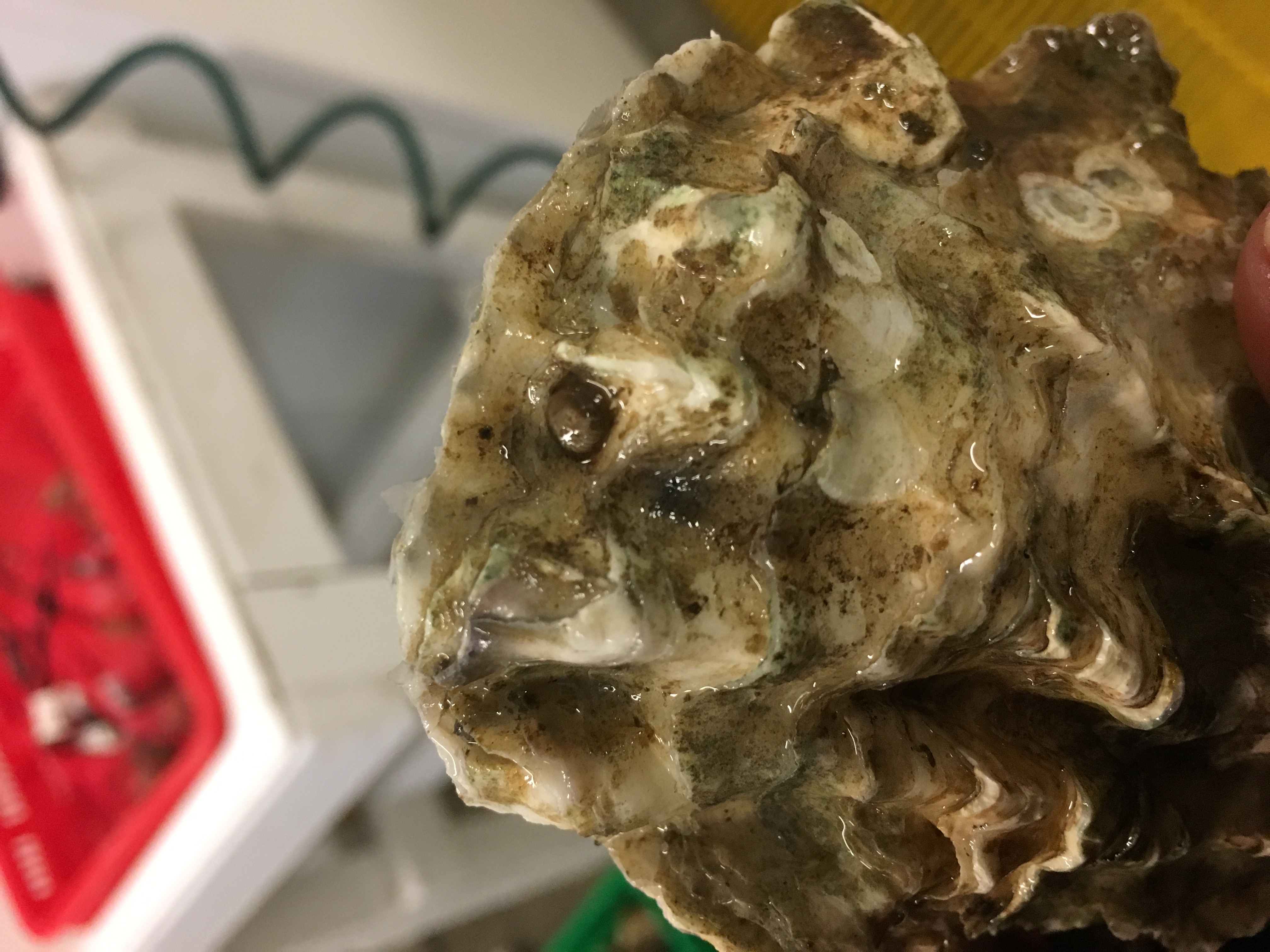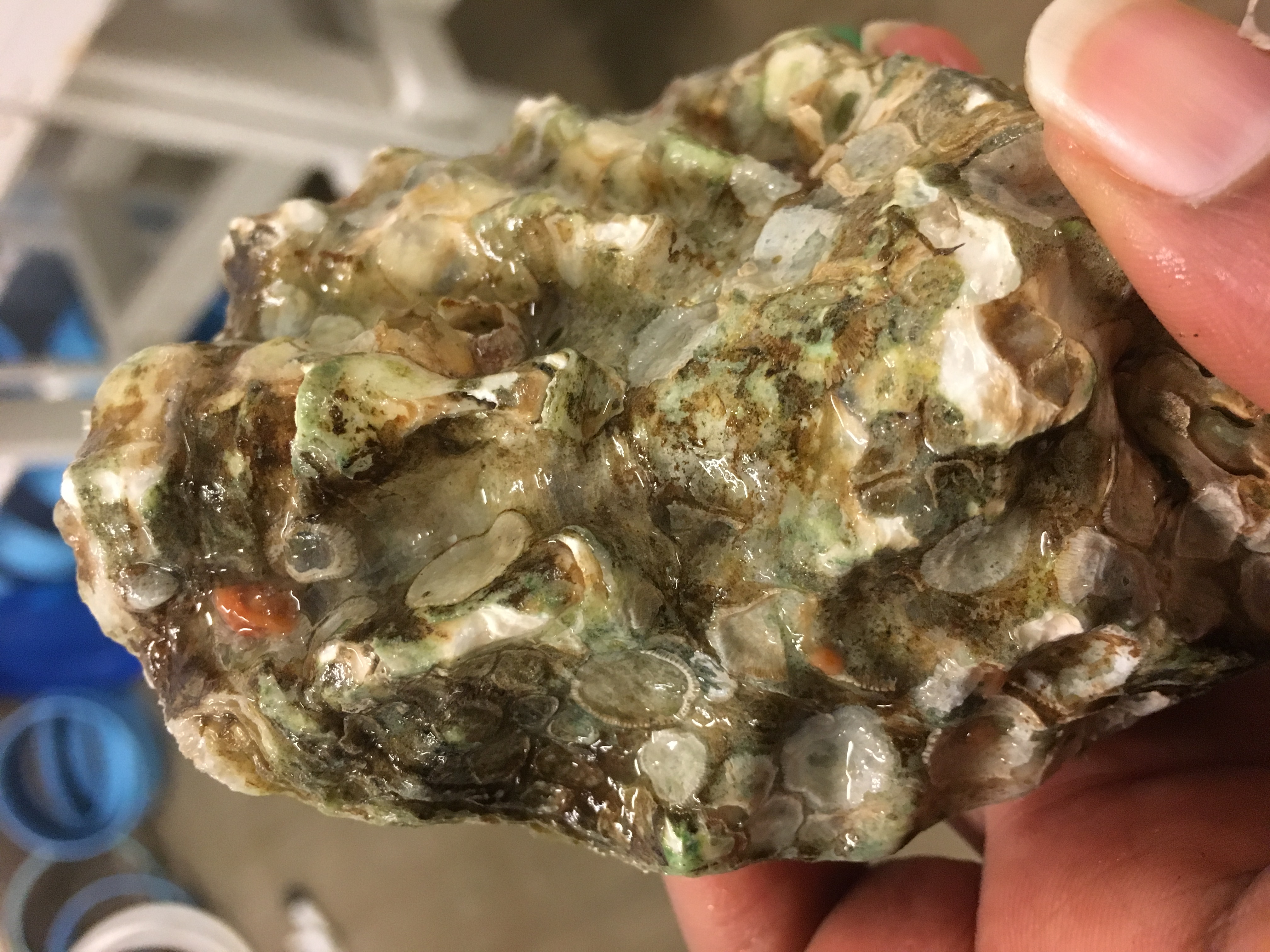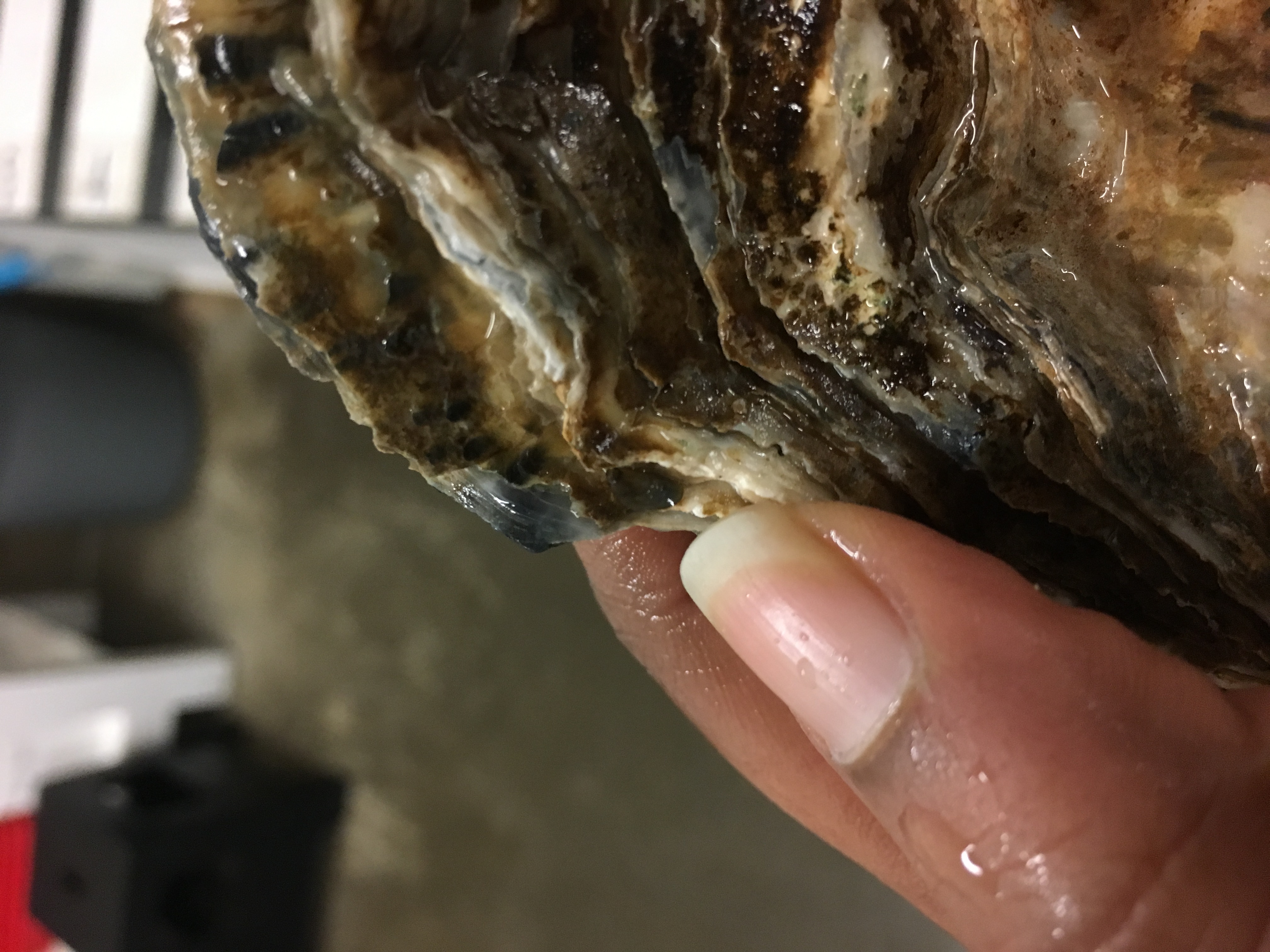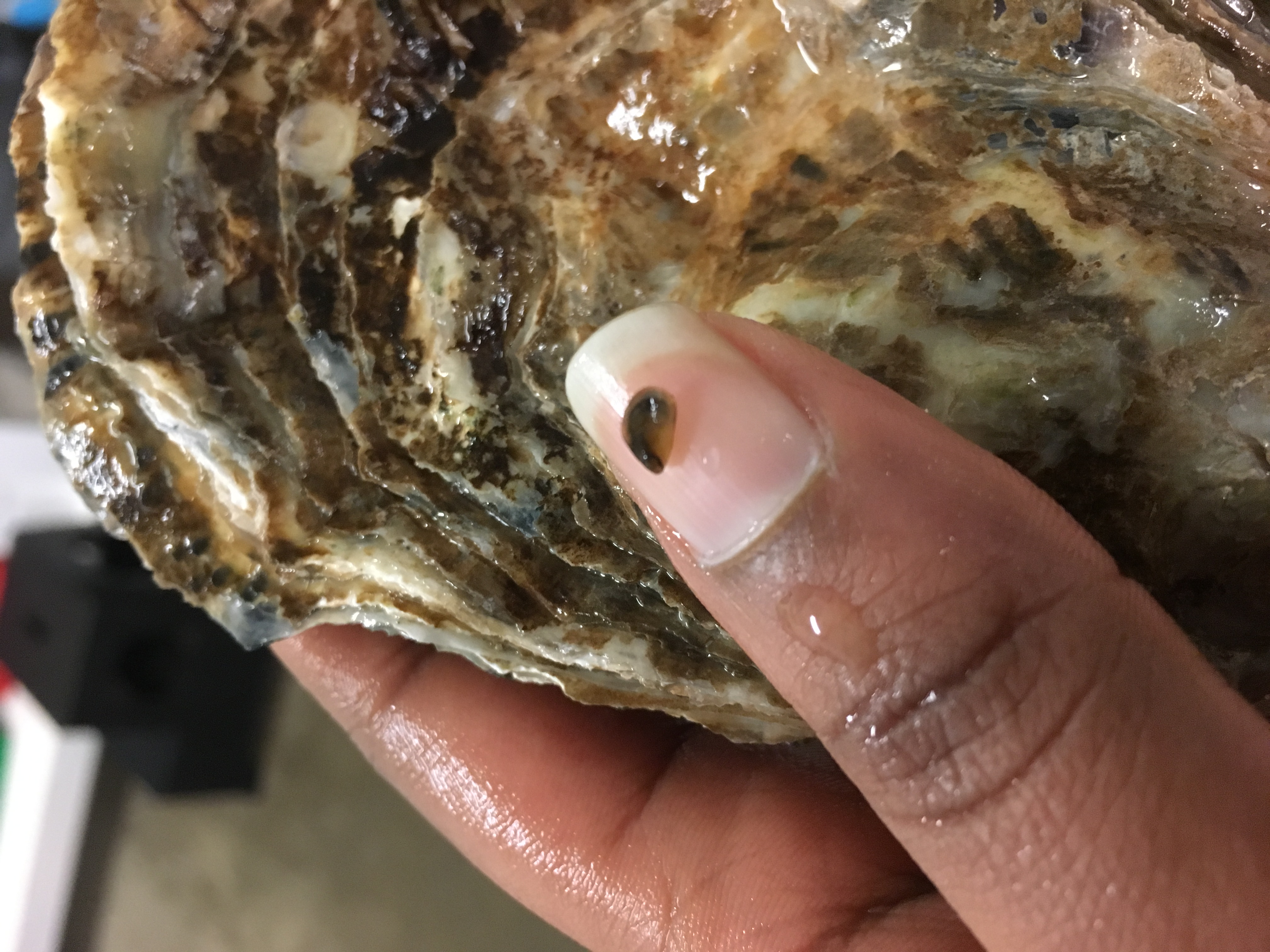Manchester Day 14
Today, I spent 3 hours cleaning oyster :poop:
After attending the March Hatchery Meeting, Laura and I set out to complete our lofty to-do list:
- Water chemistry sampling: 1L grab samples and bottle samples
- Swapped HOBO data loggers out for a new set
- Downloaded HOBO data
- Synchronized new HOBO loggers, placed in tanks
- Switch the low pH header tank
- To ensure we’re not getting any tank effects, we drained Header 1, our low pH tank. We then disconnected the CO2 and connected it for Header 2. We filled both tanks with water and injected CO2 into Header 2. Header 2 is now our low pH tank
- Because of this, we had to switch the water lines going into the tanks. The water from Header 1 flows into the far side, while the water from Header 2 flows into the closer side. We needed to switch the tubes going into each tank to ensure the oysters got the same water treatment they had before
- Vortexx culture tanks
- Drained culture tanks
- Sprayed oysters down with freshwater
- Sprayed freshwater tanks and cleaned with vortexx
- Washed culture tanks again
- Switched order of tanks on each side, to ensure we’re not getting any tank placement effects (i.e. to control for any differences, like something with the water flowing through the tubes or something with the culture tank itself)
- Added animals
- Filled tanks with water
- Added 1L of food to each culture tank to compensate for stress of being out of water, cleaned with freshwater
- Clean filters
- Bleach algal lines after organisms had enough water
One thing we did forget to do was note probe location and switch them around. I will need to do this on Monday.
I learned the C. gigas are much dirtier and “wilder” than I originally thought. When I was cleaning them, I found several polychaetes, especially in the larger oysters with lots of nooks and crannies in their shells. I also found sponges, mussels and annemones growing on them! I had to remove all of these organisms and thoroughly clean each oyster about 3 times with freshwater before all of the fecal waste and other organisms were off the shell. I was definitely drenched afterwards!




Hopefully I won’t have to spend 3 hours cleaning :poop: and other critters off my oysters next week!